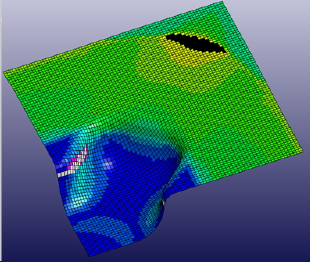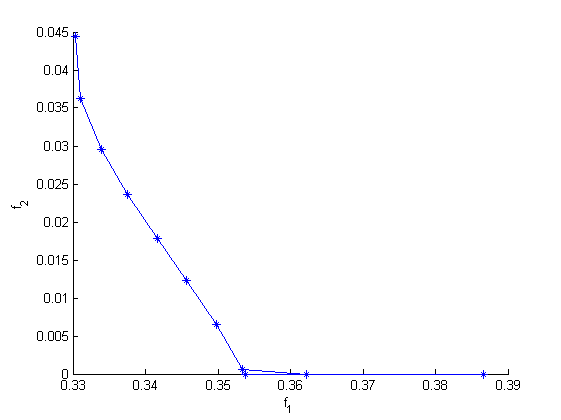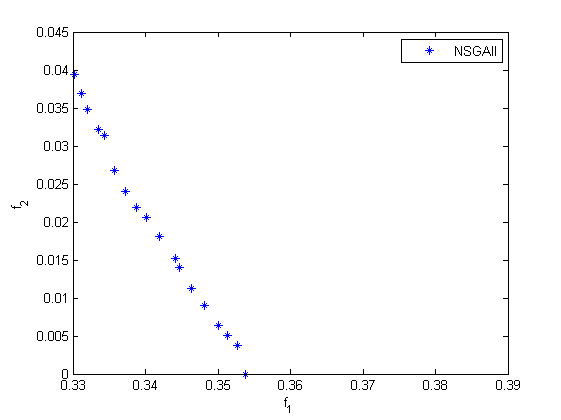Section: New Results
Optimum design in structural mechanics
Shape Optimization in Multidisciplinary Non-Linear Mechanics
Participants : Aalae Benki, Jean-Antoine Désidéri, Abderrahmane Habbal.
In collaboration with the ArcelorMittal's Center for Research in Automotive and Applications, we study the multidisciplinary shape and parameter design of highly non linear mechanical 2D and 3D structures. We have developed methods adapted to the approximation of Pareto Fronts such as Normal Boundary Intersection NBI and Normalized Normal Constraint Method NNCM. Due to the time consuming cost evaluation, the use of cheap to evaluate surrogate models is mandatory. We have studied the consistency of the approach NBI or NNCM plus surrogates, which turned out to be successful for a broad panel of standard mathematical benchmarks. The coupling is successfully applied to a small scale industrial case, namely the shape optimization of a can bottom vis à vis dome reversal pressure and dome growth criteria. We have then defined a Nash game between criteria where the latter are approximated by the RBF metamodels. First, we validated the computation of a Nash equilibrium for mathematical functions, then we computed Nash equilibria for the small scale industrial case of the shape optimization of the can bottom. In both cases, only arbitrary territory splitting was used. Application to large scale 3D industrial problems, and the study of intelligent territory splitting algorithms is ongoing.
Optimization of Addendum Surfaces in Stamping
Participants : Fatima Zahra Oujebbour, Jean-Antoine Désidéri, Abderrahmane Habbal.
Within the OASIS Consortium (ArcelorMittal, ErDF, Inria, UTC, EURODECISION, ESILV, NECS, DeltaCAD, SCILAB-DIGITEO), Opale Project leads the Optimization task. Our aim is to develop decentralized decision-making algorithms dedicated to find efficient solutions (Pareto optimal) in a complex multidisciplinary framework (forming, stamping, welding non-linear processes, spring-back, vibration, in-function linear processes, crash and fatigue non linear and non differentiable processes) for several (between three and five) criteria. An important difficulty when trying to identify the Pareto Front, even when using adapted methods such the Normal Boundary Intersection, is that the criteria involved (thanks to the high nonlinearity in the mechanical models) exhibit many local optima. So one must use global optimization methods. We have studied the hybrid approach Simulated Annealing with Simultaneous Perturbation SASP for a suite of mathematical test-cases. To envisage the application of our method to the complex CPU time consuming stamping process, we lead an intermediate phase dedicated to the validation of the SASP method for the minimization of the spring-back that follows the stamping of a metal sheet, the design variable being the thickness distribution.
We have successfully applied the NBI approach coupled to the hybrid SA+SPSA minimizer (Simulated Annealing with local search using the Simultaneous Perturbation Stochastic Approximation) to capture the Pareto front of a simple cross stamping of a high performance steel sheet. The use of cubic spline approximation of the costs (spring-back and failure criteria) turned out to be more reliable than e.g. a krigeage method.






